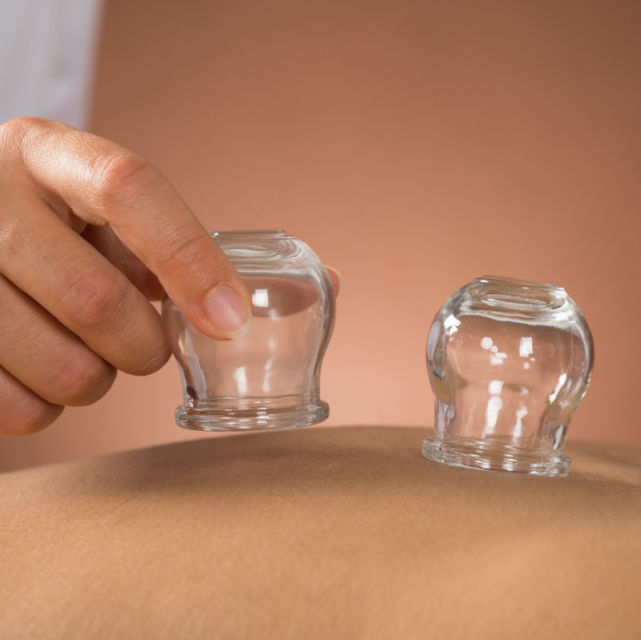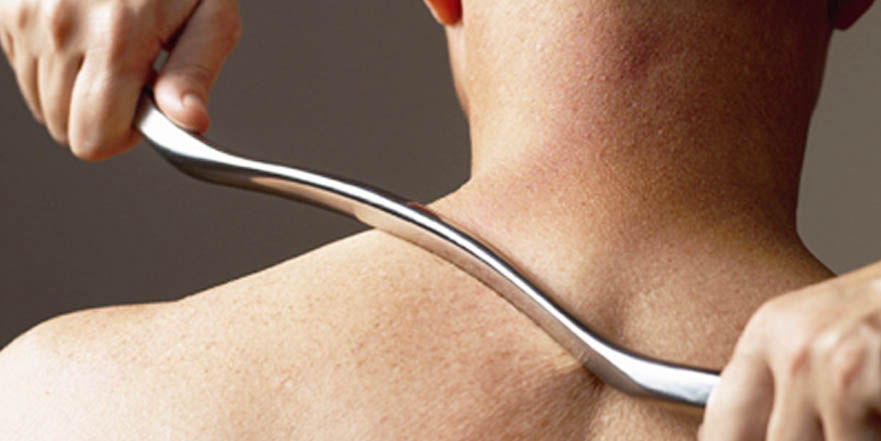
Soft Tissue Therapy
Take advantage of the most recent therapeutic best practices to engance your overall wellness.

Take advantage of the most recent therapeutic best practices to engance your overall wellness.
Suction therapy is a Chinese healing technique which has been practiced for thousand of years. According to the International Cupping Association, the first mention of suction therapy is dated back to around 300 CE.
Typical massage therapies use downward pressure to treat muscle adhesions> However, cupping uses suction to pull tissues up. Think of it like using a vacuum to suck dirt up. Traditional manual massage therapy and cupping both work to unwind tension and loosen adhesions in the body.
Cups may be held in one place “static”, or slid along the skin like a moving vacuum called “gliding” or “dynamic.” Cupping therapy should not be painful. It can be deep and therapeutic or gentle and relaxing depending on your preference and the desired result you're looking for.

What Is Instrument-Assisted Soft Tissue Therapy?
Instrument-assisted soft tissue therapy (IASTT) is a specialized manual technique that utilizes smooth metal instruments to address various soft tissue issues, such as scar tissue, muscle spasms, and restrictions in range of motion. It is an effective treatment approach that aims to improve mobility, alleviate pain, and enhance overall function.
The primary purpose of IASTT is to locate and target areas of soft tissue dysfunction that may be causing discomfort, restricted movement, or hindering your ability to engage in activities you enjoy. Scar tissue can develop as a result of surgery, trauma, or repetitive use injuries, and it can lead to adhesions and limitations in movement. Muscle spasms, on the other hand, can cause pain, tightness, and reduced flexibility.
IASTT utilizes specialized stainless steel tools with smooth edges, specifically designed to apply controlled pressure and friction to affected soft tissues. These instruments allow the therapist to precisely detect and address areas of dysfunction that may not be effectively treated through other manual therapy techniques. By gently gliding the instruments over the skin, the therapist can identify and break down scar tissue adhesions, release muscle spasms, and promote tissue healing.
What to Expect
During an IASTT session, the therapist will assess your specific condition and target the affected areas with the instruments. The therapist will apply appropriate pressure and use specific techniques to effectively address the soft tissue dysfunction. The treatment may cause some mild discomfort or a sensation similar to deep tissue massage, but it should not be excessively painful.
The Benefits of IASTT
IASTT can offer numerous benefits. By reducing scar tissue and muscle spasms, it can help restore normal tissue function and improve range of motion. This therapy can also enhance circulation, promote tissue healing, and alleviate pain associated with soft tissue dysfunction. Additionally, IASTT can be used as a complementary treatment alongside other therapeutic modalities to optimize outcomes.
If you are experiencing limitations in movement, muscle tightness, or discomfort that is affecting your daily activities, consult with a healthcare professional who can evaluate your condition and recommend appropriate treatment options. Instrument-assisted soft tissue therapy may be a valuable approach to help you regain function, alleviate pain, and improve your overall quality of life.
BLOG ARTICLES
Access the latest news and information.
CLICK HERE

Made with
Offline Website Builder